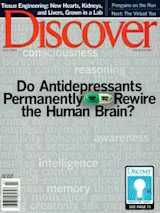The sun spends most of this month in the constellation Gemini. To the ancient Greeks, Gemini's mirror-image pattern of stars recalled the mythological brothers Castor and Pollux. These days, those stars bring to mind a more scientific symbolism: the paired phenomena that are ubiquitous throughout the universe.
Everywhere they look, astronomers see doubles. In the centers of quasars and active galaxies, massive black holes blow out vast jets in matching, perpendicular streams. Twin jets emerge from newborn stars as well, probably because of the same fundamental rules. When clouds of gas fall inward, they tend to organize into a rotating disk; when that disk fills up, some of the gas squirts out along both poles. The orbiting Chandra X-ray Observatory has spent the past year documenting this double trouble in quasars, while last year the Hubble Space Telescope captured the best views yet of outflows from young stars.
Twins seem ...














